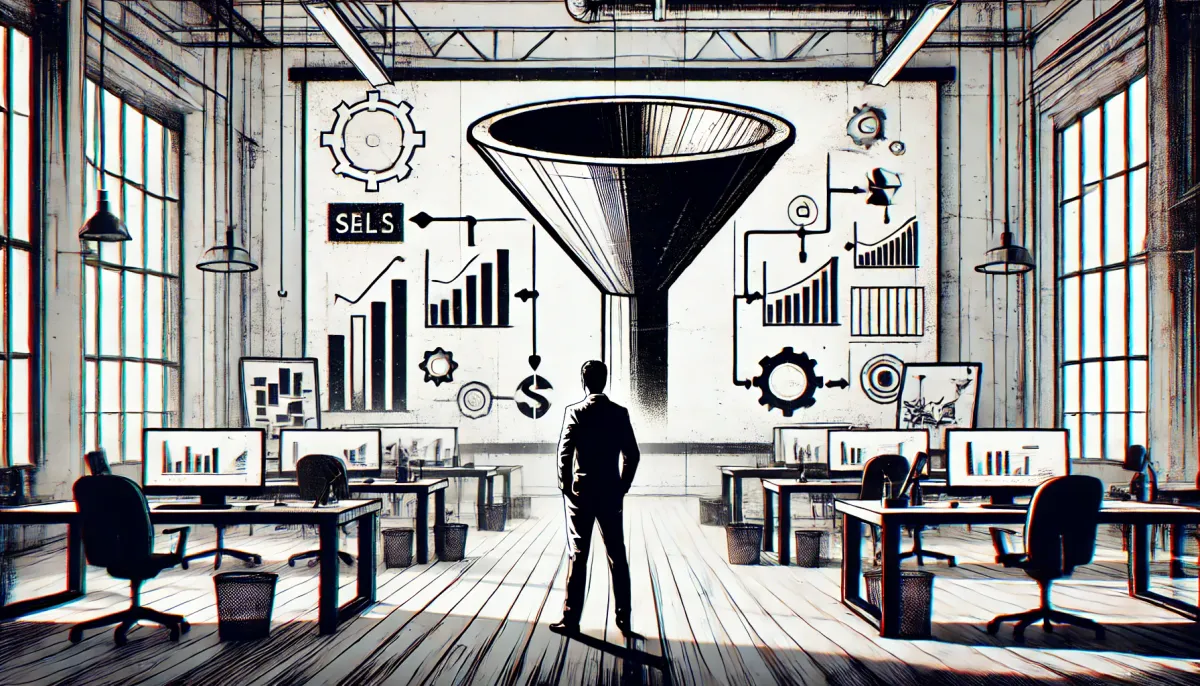The Funnel Focus Framework: How to Stop Working Hard on the Wrong Things

This article is based on a video from Raw Startup. Please find a link to the video at the bottom of this article.
Every founder has heard (or said) this: "We're working like crazy, but nothing is happening." It's a common frustration, and here's the hard truth – most founders work incredibly hard on the wrong things at the wrong time. It's not about working harder; it's about working on the right things in the right order.
The Problem: Spreading Too Thin
Consider this real example: A founder with only 50 active users was simultaneously working on:
- Improving user retention
- Creating a premium version
- Optimizing the backend for scale
- Adding new features
- Running marketing campaigns
This is a classic case of spreading resources too thin. The solution? A framework called Funnel Focus – a simple four-step process that tells you exactly where to put your resources.
The Funnel Focus Framework
1. Map Your Funnel
The first crucial step is mapping out your entire funnel from start to finish. A funnel should always start with something you can directly influence and end with your ultimate goal for users.
Key Principles for Mapping:
- Start with the first thing you can actually influence
- Don't include external factors you can't influence
- Map all the way to your desired end goal
- Include every meaningful step between awareness and final action
For example, a typical app funnel might look like:
- People becoming aware of your product (through channels you control)
- Users developing interest in your solution
- Taking action to install
- Completing the installation process
- First meaningful action in the app
- Return usage and engagement
- Conversion to paid features (if applicable)
- Ultimate goal achievement (what you want users to accomplish)
Even a simple business like a café has a funnel:
- People noticing the café (through your signage, marketing)
- First-time visit
- Placing an order
- Having a positive experience
- Returning for repeat visits
- Becoming a regular customer
2. Find Where It Breaks
Start from the top and work down systematically. Look for the first place where the funnel actually breaks – not just where things could be better, but where it breaks the most. This is crucial because problems almost always manifest higher in the funnel than you think.
Key Points About Finding Breaks:
- Always start at the top and work down
- Look for the biggest breaks, not just inefficiencies
- Be honest about where people actually stop progressing
- Remember that early funnel problems mask later ones
- Don't try to fix downstream issues when upstream is broken
Common Mistake: Don't obsess over retention when you only have eight users. With such a small user base:
- You don't have enough data to make meaningful improvements
- User feedback isn't statistically significant
- Your real problem is likely acquisition
- You're wasting resources on optimizing for non-existent users
3. Deploy ALL Resources
This is the crucial step where most founders fail. When you find the breaking point, especially in the early stages of your startup:
- Deploy all resources to fix it
- Not some resources
- Not most resources
- ALL resources
Early-stage startups particularly need this level of focus because:
- Resources are extremely limited
- Each problem needs significant attention to solve
- Splitting focus often means solving nothing
- Early wins compound over time
- You can't afford to dilute your efforts
This requires the courage to stop working on "important" things that aren't the most important right now. Ask yourself: "If I could only work on one thing this month, what would it be?"
4. Remember It's a Marathon
Success rarely comes from a single fix. The Funnel Focus framework is an ongoing process that requires patience and persistence:
Long-term Approach:
- Nothing gets fixed in one day or one week
- Keep grinding at your identified breaking point
- Monitor metrics to ensure your fixes are working
- Be prepared to stay focused for weeks or months
- Don't get discouraged by slow progress
When to Pivot:
- If changes don't yield results after sufficient time, go back to step 2
- Sometimes you need to revisit your funnel mapping and improve it
- The process continues until the funnel flows smoothly
- Be prepared to cycle through multiple iterations
- Each fix might reveal new breaking points
Common Mistakes to Avoid
- The "Everything is Important" Trap
- When everything is a priority, nothing really is
- Focus means saying no to good opportunities
- Accept that some fires will have to burn
- The Half-Focus Problem
- Identifying the problem but only applying 50% of resources
- Real focus requires all-in commitment
- Partial focus usually means partial results
- Premature Optimization
- Working on optimization before having users
- Fixing retention before acquisition
- Remember: Problems are usually at the top of the funnel
Implementing Funnel Focus
To implement this framework effectively:
- Be brutally honest about where your funnel breaks
- Have the discipline to ignore everything else
- Ask yourself: "If I could only work on one thing this month, what would it be?"
- Keep revisiting and adjusting as your startup grows
- Trust the process even when it feels uncomfortable
Conclusion
Success in startups isn't about working harder – it's about working on the right things at the right time. The Funnel Focus framework provides a clear path to identify and fix what truly matters in your business right now. Remember, you'll never have enough resources, but with proper focus, you can make the most of what you have.
Watch the full video on Raw Startup
